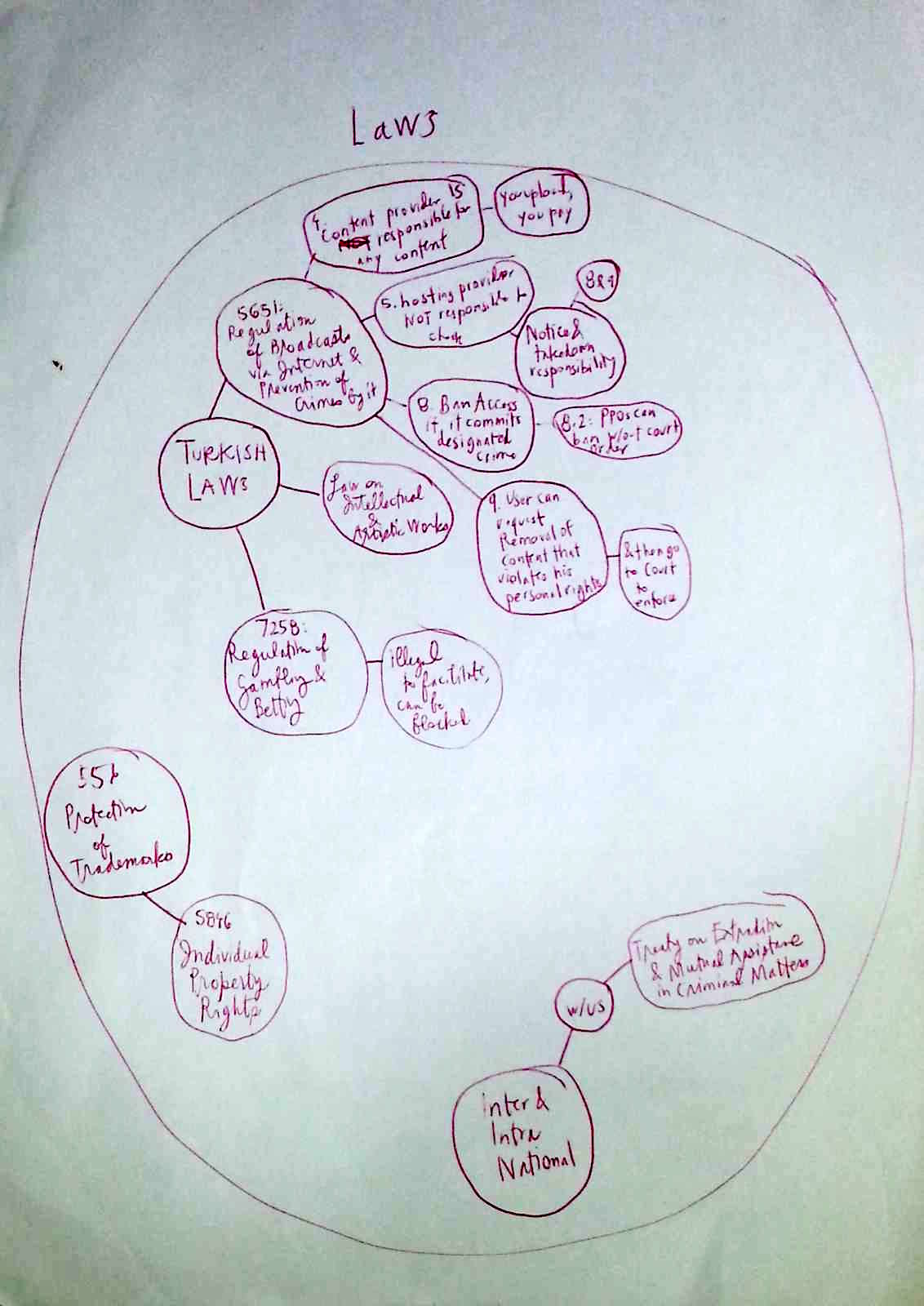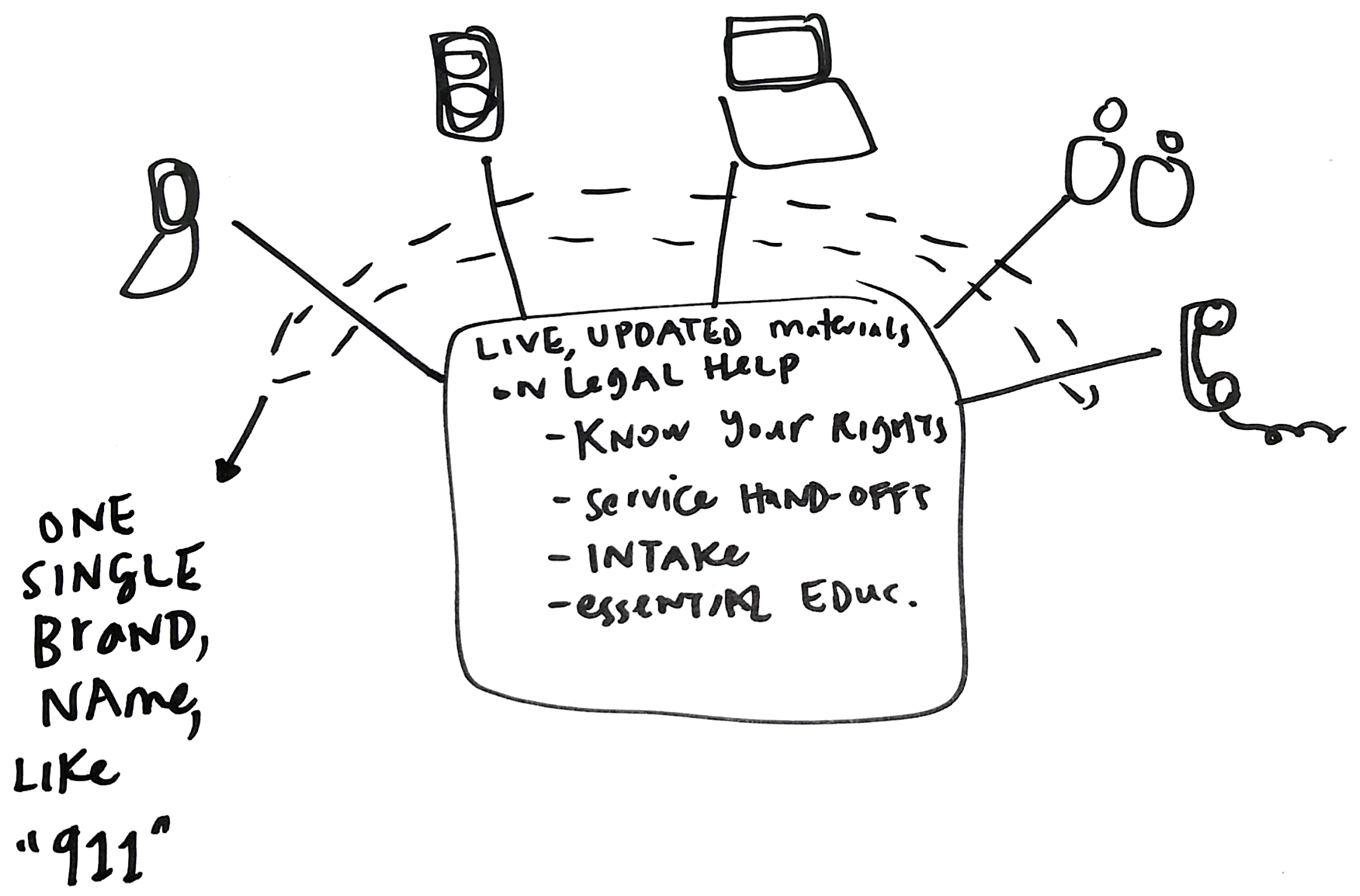I found some old sketchbooks of mine, that I had on my internship desk between my 1L and 2L summer. I was working at a law firm in Istanbul, trying to understand the intricacies of Internet and free speech laws and all the competing interests in Turkey of 2011 (it has only gotten more complicated and thorny — not to mention punishing) since then.
To do so, I would read articles, books, send out emails to experts, follow Twitter accounts, and try to translate as much as I could with my then-pigeon Turkish. And at the same time (before I ever really thought about legal design), I sketched out what I was learning.
Here are some of those sketches, rough and incomplete, but a nice little example of how very simple maps can help a person to capture and make sense of a load of new information they’re gathering.
Now this habit that I started during the start of my law school days, is what I try to teach to all my students (and anyone going through the design process): think through visuals and think through building. If you have to represent it not just through text, words, outlines, but in more creative and graphic ways — it will help you to think better, remember more, and find the patterns and connections you wouldn’t otherwise.










4 Comments
Love this. Have been trying to get my associates to map on a white board for some years now. Those that do find they make more coherent and effective arguments because they understand the case better. Now to get more of them doing it! Any suggestions ?
I have the luxury of being at the front of a classroom and setting requirements that students (usually…) must adhere to. But I find the most convincing strategy is to model it constantly, especially while in a one-on-one setting. It soon becomes clear that whomever is drawing has the power — they are setting the tone and the direction — and so I tend to start off drawing everything out that’s being talked about, and then hand blank paper and marker to the student and indicate that they need to draw whatever it is that they want to say if they want me to be able to understand it.
Thanks! Especially like the idea of making them draw it if they want me to understand. I will see what happens…stay tuned!
[…] Sourced through Scoop.it from: http://www.openlawlab.com […]